Featured Image: Virgin Orbit
Drop Time | January 13, 2022 – 22:52:27 UTC | 14:52:27 PST |
|---|---|
Mission Name | Above the Clouds |
Launch Provider | Virgin Orbit |
Customer | United States Department of Defense, SatRevolution, and Spire Global |
Rocket | LauncherOne |
Launch Location | Cosmic Girl, Mojave Air and Space Port, California, USA |
Payload mass | Unknown, up to 300 kg (660 lb) |
Where did the satellites go? | 500 km (310 mile) low Earth orbit (LEO) at a 45 degree inclination |
Did they attempt to recover the first stage? | No, this is not a capability of Virgin Orbit |
Where did the first stage land? | It crashed into the Pacific Ocean |
Did they attempt to recover the fairings? | No, this is not a capability of Virgin Orbit |
Were these fairings new? | Yes |
This was the: | – 2nd DoD mission for Virgin Orbit – 1st LauncherOne flight of 2022 – 4th LauncherOne flight ever – 3rd orbital launch attempt of 2022 (3rd successful) – 1st launch from the West Coat of the United States to a 500 km, 45 degree inclination orbit |
Where to watch | Official replay |
How Did It Go?
Virgin Orbit successfully launched their fourth LauncherOne vehicle on the Above the Clouds mission. LauncherOne was dropped from a 747-400 aircraft named “Cosmic Girl” over the Pacific Ocean and ignited its engines to successfully carry all payloads into a safe orbit. The “launchpad”, or the 747-400 which carried LauncherOne to its drop zone, travelled back to the Mojave Air and Space Port and successfully landed.
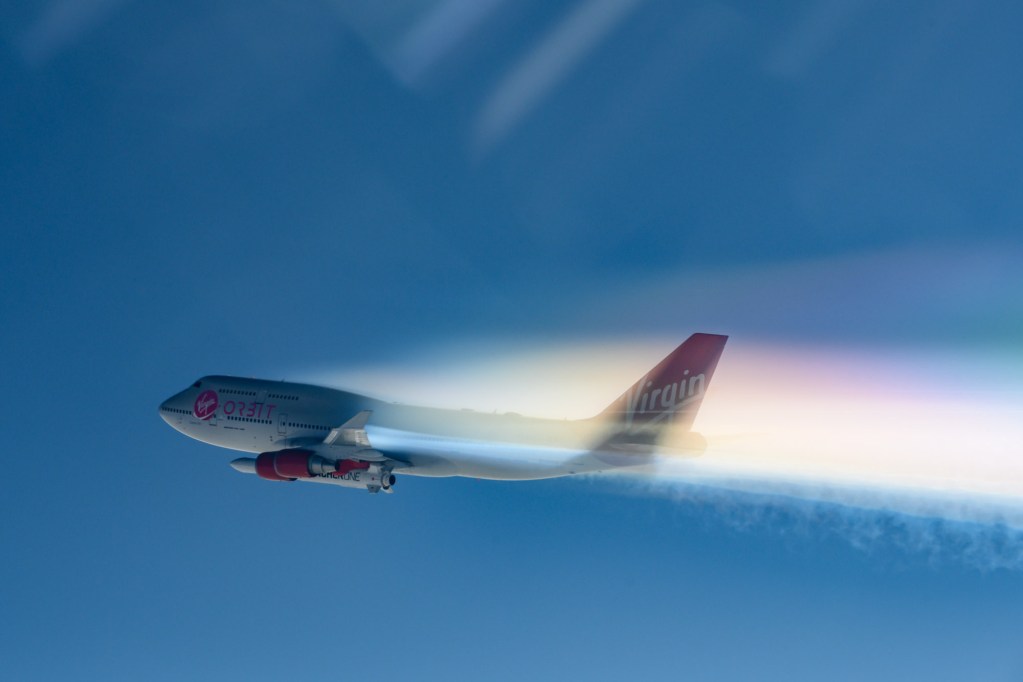
What Does Above The Clouds Mean?
Virgin Orbit has started a tradition of naming missions after musical pieces. Above the Clouds alludes to Gang Starr’s album Moment of Truth which was released in 1998 by Virgin Records. The fifth track of the album is titled Above the Clouds, featuring Inspectah Deck of Wu-Tang Clan. The title certainly describes the style of launch Virgin Orbit conducts, which was one of the main reasons it was chosen.
What’s Flying On Above The Clouds?
The United States Department of Defense and SatRevolution launched a number of satellites on Above the Clouds. Virgin Orbit’s previous mission Tubular Bells, Part One, hosted satellites from the US DOD and SatRevolution as well.
United States Department of Defense Payloads
The Department of Defense has gathered several satellites from various government agencies to fly as Research and Development (R&D) satellites. These smaller satellites will be testing the integration of space-based communications and in-space navigation in the United States to strengthen national security.
Virgin Orbit was selected to fly these satellites through the DoD’s Defense Innovation Unit (DIU), a part of the DoD’s Space Test Program (STP) Rapid Agile Launch Intuitive (RALI). The Space Test Program is a DoD-run program that selects prioritized satellites annually through the Space Experiments Review Board (SERB). The tri-service program, which includes the Navy, Air Force, and Army is run out of Kirkland Air Force Base, New Mexico, and Johnson Space Center in Houston.
The specifics of each satellite and which branch of the military has designed them, has not yet been made public. In addition to these payloads, there is also a university payload funded by NASA.
SatRevolution Payloads
Previously, SatRevolution launched their STORK-4 and STORK-5 Marta satellites on Tubular Bells, Part One. For Above the Clouds, SatRevolution will be sending STORK-3 to join the two previously launched satellites. In short, these three satellites will observe and collect data from the upper layers of the Earth’s surface. It will study farmland by collecting data on the condition of crops. This data can then be used by farmers to better the quality and health of their crops and properly regulate their hydration levels.
SatRevolution will also be launching a test payload for SteamJet Space Systems. The UK based company will be sending a test payload to experiment with the possibilities of water-fueled thrusters for in-space propulsion.
Named SteamSat-2, the satellites thruster, which is designed for smallsats and CubeSats, is slated to be able to cover all needs such as de-orbit, orbit raising and lowering, collision avoidance, and general maneuverability. SteamJet already has figures for their TunaCan thruster, which can be found in the table below.
SteamSat-1 one does exist but has not flown making SteamSat-2 the company’s first satellite to be placed into orbit. SteamSat-1 will launch sometime next year. In addition, Steam Thruster One, the larger and more powerful of the two thrusters, is slated to launch in Q1 of 2022.
| Thrust | 6 mN |
| ISP (Specific Impulse) | 172 seconds |
| Total Impulse | 219 Newton seconds (Ns) |
| Wet Mass | 540 g |
| Dry Mass | 410 g |
| Propellant Mass | 130 g |
| Power Consumption while Thrusting | less than 19.9 W |
| Propellant | Water (H20) |

This system aims to be cheaper, safer, and have the ability to output high thrust. The TunaCan thruster houses the entire propellant tanks and thruster in the 80 mm by 80 mm size, while the larger Thruster One has a separate tank and a longer thrusting time. The TunaCan is designed for 1-6U CubeSats, while Thruster One is designed for larger CubeSats and small satellites.
Spire Global Payload
Spire Global was able to hitch a ride later than the other satellites on the mission. They chose to add their Austrian Debris Detection Low Earth (orbit) Reconnoiter (ADLER-1) satellite as an additional payload. This small 30 cm by 10 cm by 10 cm satellite aims to study the micro space debris floating around in Low Earth Orbit. ADLER-1 will orbit the Earth at around 500 km (310 miles) and weighs 6 kg (13 lb).
Generally, these small debris are nearly impossible to track via Earth based tracking stations because of their size. However, by placing a tracking station in orbit, these debris become easier to track. A total of three partners teamed up to get ADLER-1 to orbit. These partners include Findus Venture GmbH serving as the funding organization, the Austrian Space Forum (ÖWF – Österreichisches Weltraum Forum) to conduct space research, and Spire Global Inc., a Silicon-valley based space company.
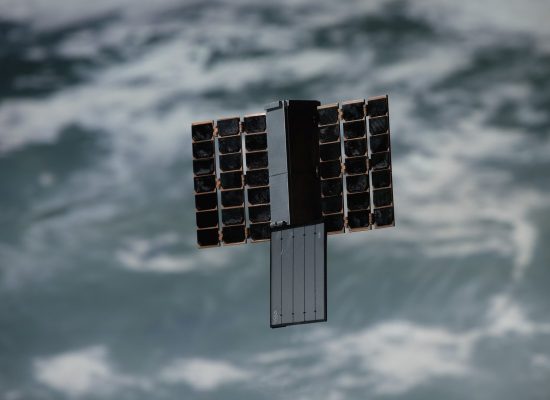
There are two main instruments on ADLER-1. First, the Austrian Particle Impact Detector (APID) is a piezoelectric array measuring 0.3 m2 (1 ft2) designed to detect electrical currents triggered by small particles. Combined with satellite positioning and velocity data, more information can be learned about the specific particle.
The second detector comes in the form of short wave radar. This radar will aid in detecting near-miss debris that passes within a 100 m (320 ft) of the continuous wave radar. Continuous wave simply indicates that the radar is emitting a single and stable frequency. Using the Doppler effect, which is when radar waves are reflected off an object, measured, and then the velocity of the object calculated, ADLER-1 can get similar readouts from small or micro sized debris.
LauncherOne Launch Sequence
After Cosmic Girl reaches 10,600 m (35,000 ft) of altitude, the pilots pitch the plane upwards at a 27° angle. Then, controllers give the launch command (hitting the Big Red Button) from the “first-class” Mission Control. This triggers the launch sequence that ensures that there is no accidental jettison prior to the actual commanded launch.
Launch
The red pylon contains 3 hooks that detach from the rocket, letting the rocket fall. After about three seconds of free-fall, the propellant settling thrusters ignite, followed by the NewtonThree engine firing. After a few minutes, it has increased its velocity to about 12,870 km/h (~8,000 mph). The first stage then separates from the second and breaks up in the atmosphere following a ballistic trajectory.
Stage Separation
Shortly after stage separation, the second stage’s NewtonFour Engine ignites. It propels the payload the rest of the way to orbit. Depending on the flight profile and mission, the second stage will perform two or three burns for a controlled deorbit, or to increase performance. Once the rocket is out of the thickest parts the atmosphere, the fairing halves will separate and fall back into the ocean, since they are no longer needed to protect the payload.
LauncherOne
LauncherOne is comprised of two stages. To start off, the first stage, which houses RP-1 (Rocket Propellant-1, a highly refined form of kerosene) and liquid oxygen or LOX. These two will mix and power the single, pump-fed, NewtonThree engine, which is capable of producing 327 kN (73,500 lbs) of thrust. Near the fins of the engine, there are two Propellant Settling Thrusters (PSTs). They ignite just seconds before the NewtonThree engine to force the propellants to the bottom of the tank where the valves are, which leads to the propellant transfer lines so the engine doesn’t take in any air. This is not commonly seen on the first stages of liquid-fueled rockets, since they take off vertically and on the ground. However, they are very common and almost necessary on the proceeding stages of any rocket.

The second stage is much smaller and has a single, pump-fed, NewtonFour engine, which is also propelled by RP-1 and LOX. This engine has the capability to relight and can only produce 22 kN (5,000 lbf) of thrust. The difference between each engine is minimal since LauncherOne is already at around 10,600 m when its first stage ignites. Therefore both engines need to have a larger engine bell than if they were at sea level. This larger bell helps to take advantage of the lack of air pressure at high altitudes to perform better.
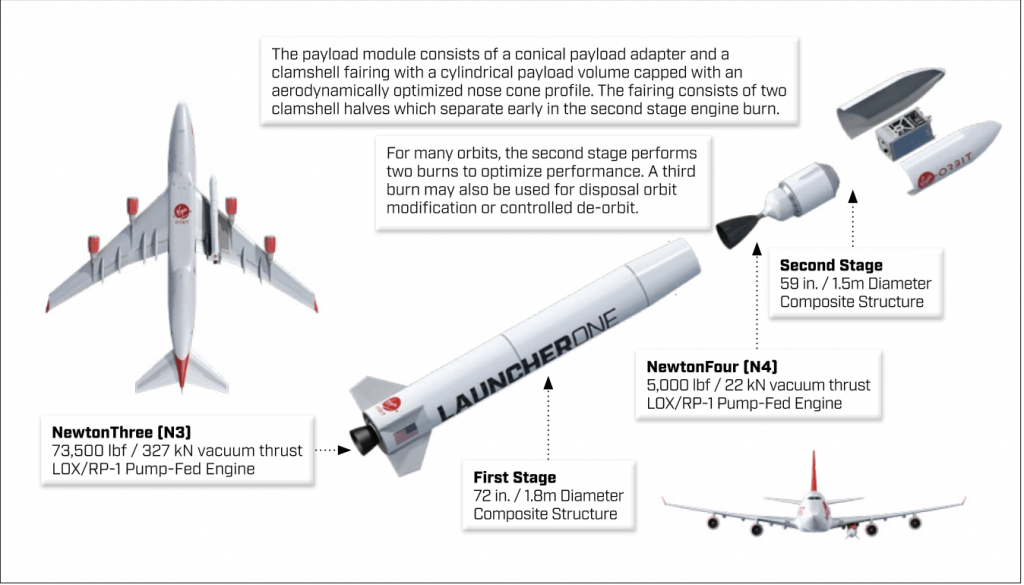
How does LauncherOne compare to other rockets?
The only other place where one might find a set of events similar to LauncherOne’s is Northrop Grumman’s Pegasus launcher, which also starts underneath a plane. In particular, a Lockheed L-1011 TriStar aircraft named Stargazer. Pegasus has launched a total of 44 times with 39 total successes.
How do Pegasus and LauncherOne differ?
Visually, they are both fairly similar. They have the familiar rocket shape (flamey end and a pointy end) and both have fins. However, Pegasus has a wing near the midsection of the rocket. This is for enhanced stability specific to the structure of Pegasus.
| LauncherOne | Pegasus | |
| First Stage Engines | 1 | 1 |
| Stages | 2 | 3 |
| Payload Capacity (LEO) | 500 kg (1100 lb) | 443 kg (977 lb) |
| Launch Platform | Boeing 747-400 (Cosmic Girl) | Lockheed L-1011 TriStar (Stargazer) |
| Lift-off Location | Mojave Air and Spaceport, California | Varies (Florida, California, Pacific and Atlantic Oceans) |
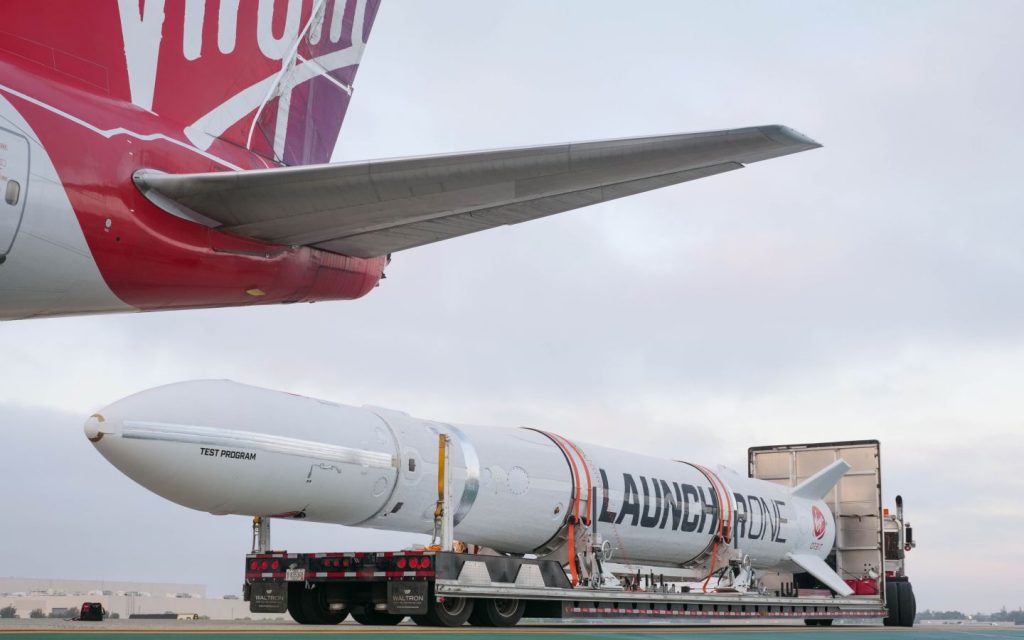
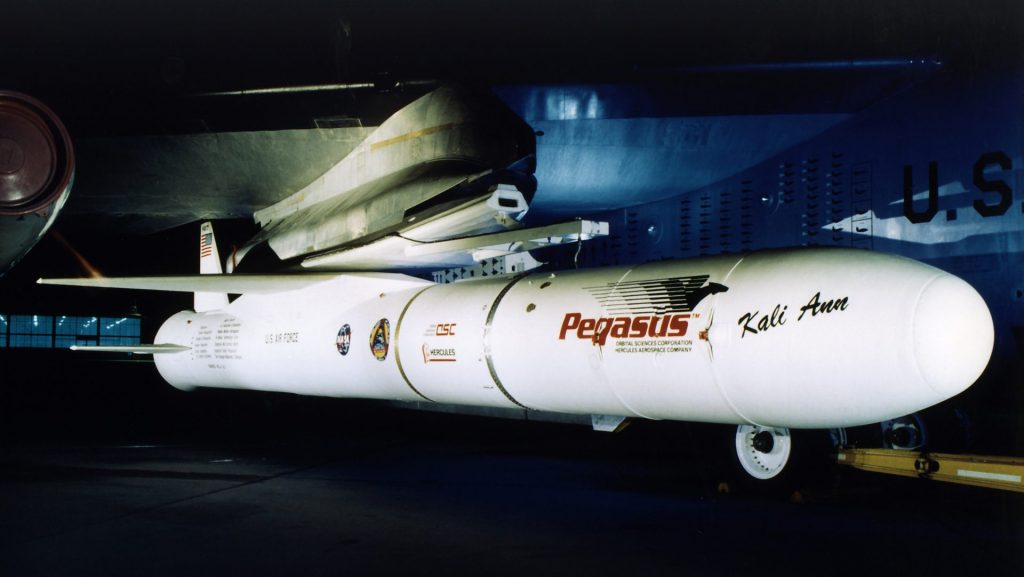
Why Air-Launch?
The ability to air-launch is a tremendous advantage for multiple reasons. If the weather is bad in one area, the plane can fly to another area with calmer skies. Some other advantages include a reduced amount of fuel, an altitude and velocity increase, which will already have taken it out of the denser parts of the atmosphere.
However, there is one major disadvantage. Weight. Because Cosmic Girl can only carry so much weight, and fuel is heavy, Virgin Orbit reduced the payload’s weight. That means the maximum payload to LEO is 500 kg and to Sun Synchronous Orbit (SSO) is 300 kg.

On the other hand, this weight limitation does not impede Virgin Orbit’s principal mission. Their goal is to make space available to everyone. Since the CubeSat industry is expanding, there is room for yet another launch vehicle in the small sat launcher class. They will be capable of providing a cheaper way to launch small satellites for universities and STEM programs.





